Ehab Mohamed Painting Wall Art & Canvas Prints
Ehab Mohamed Painting Wall Art & Canvas Prints
Couldn't load pickup availability
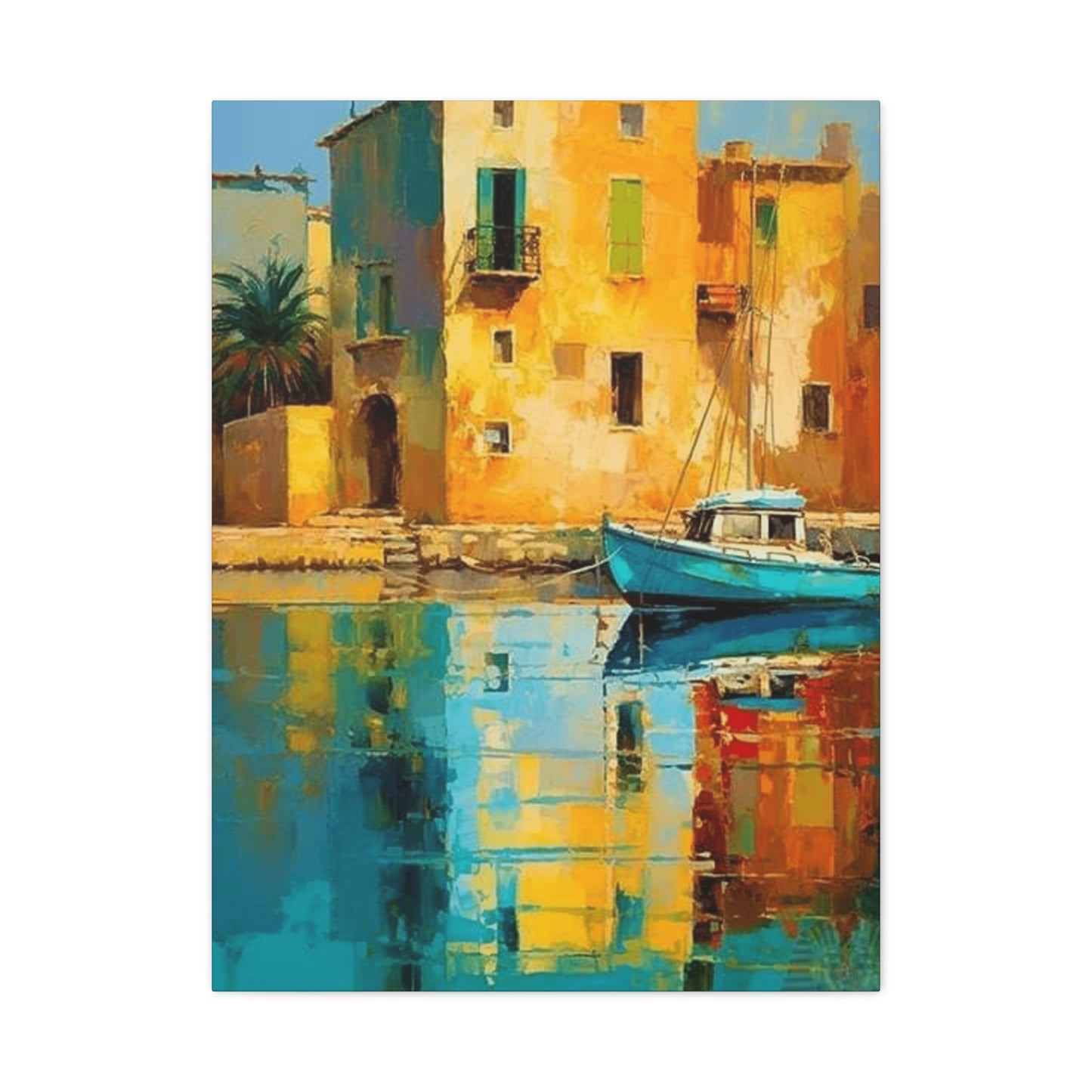
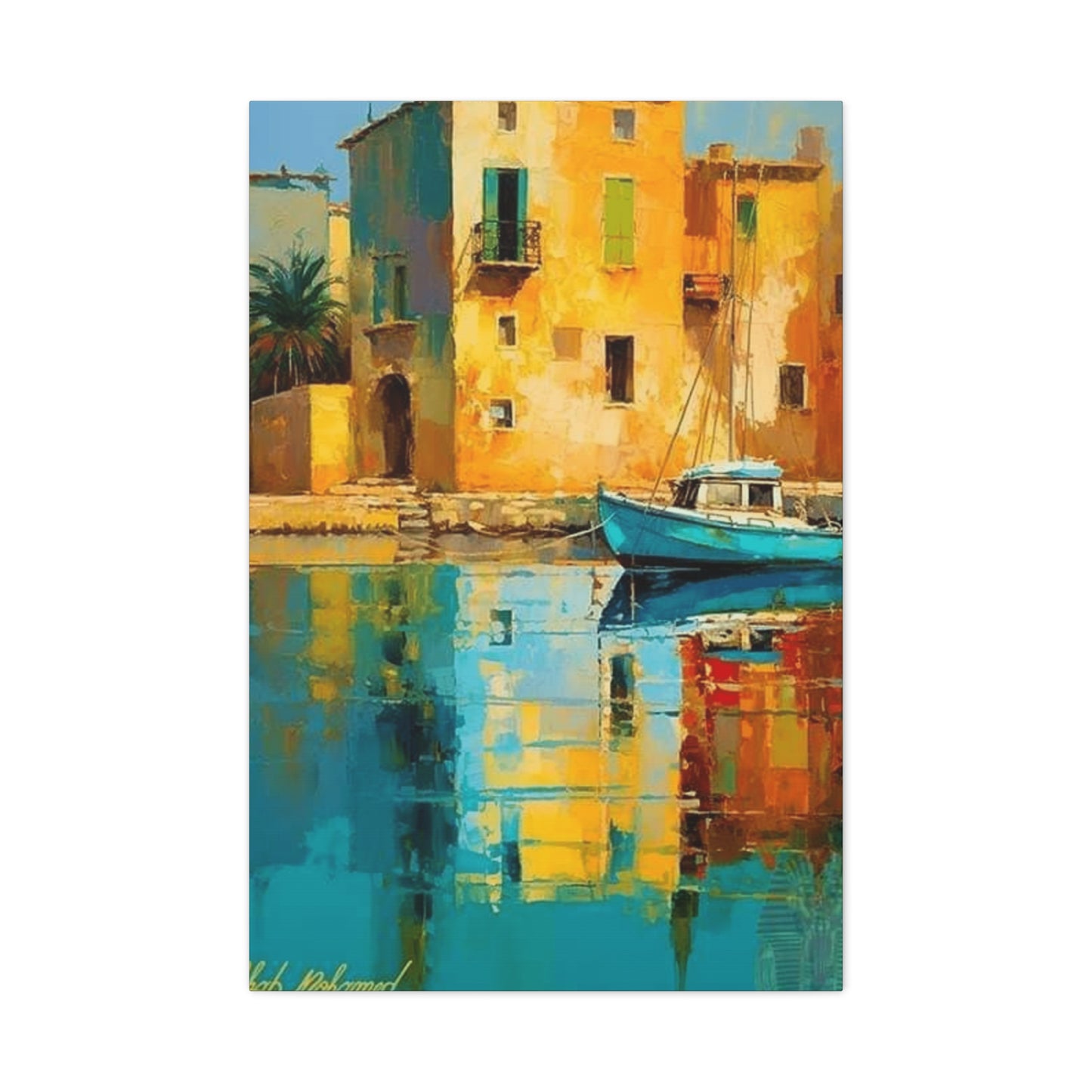
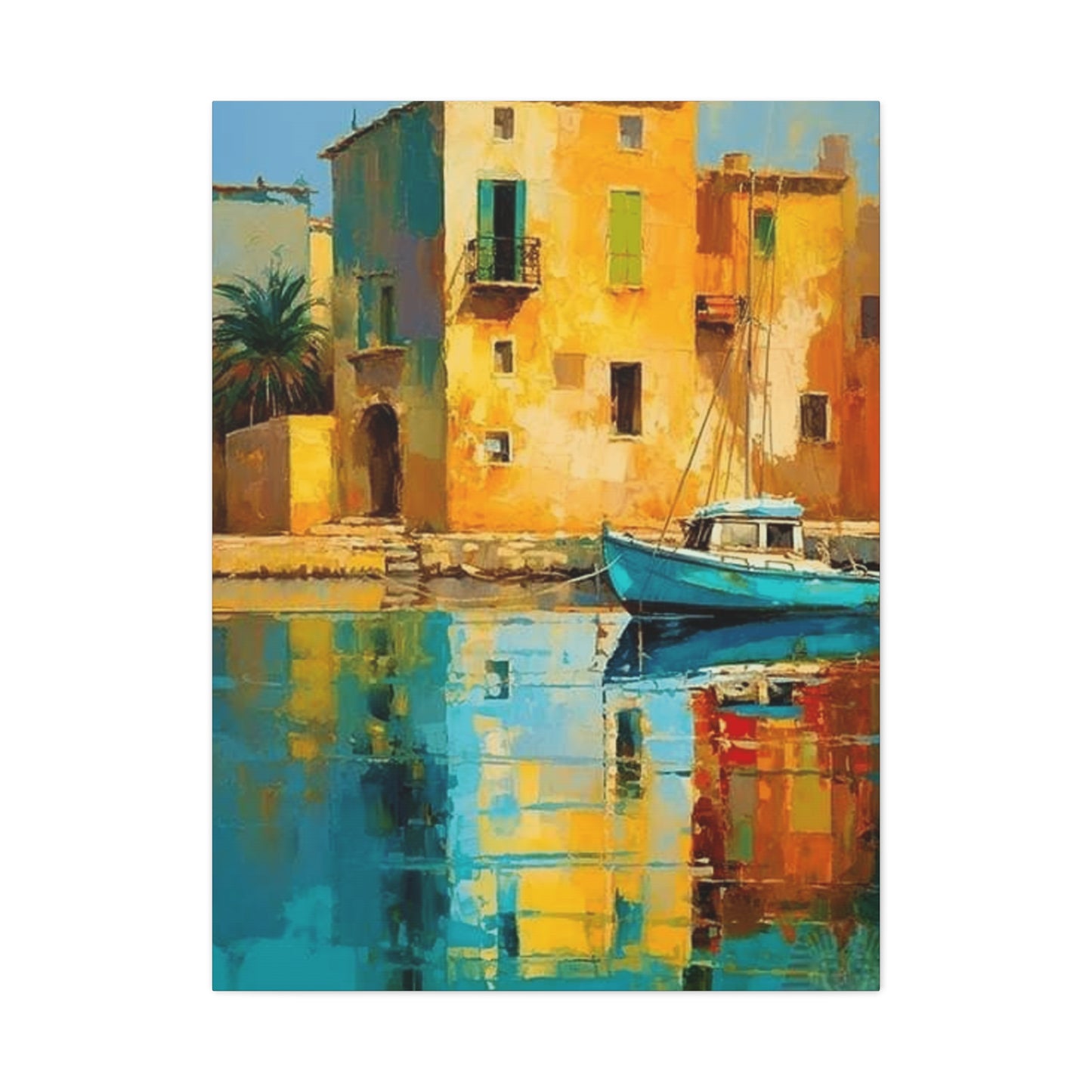
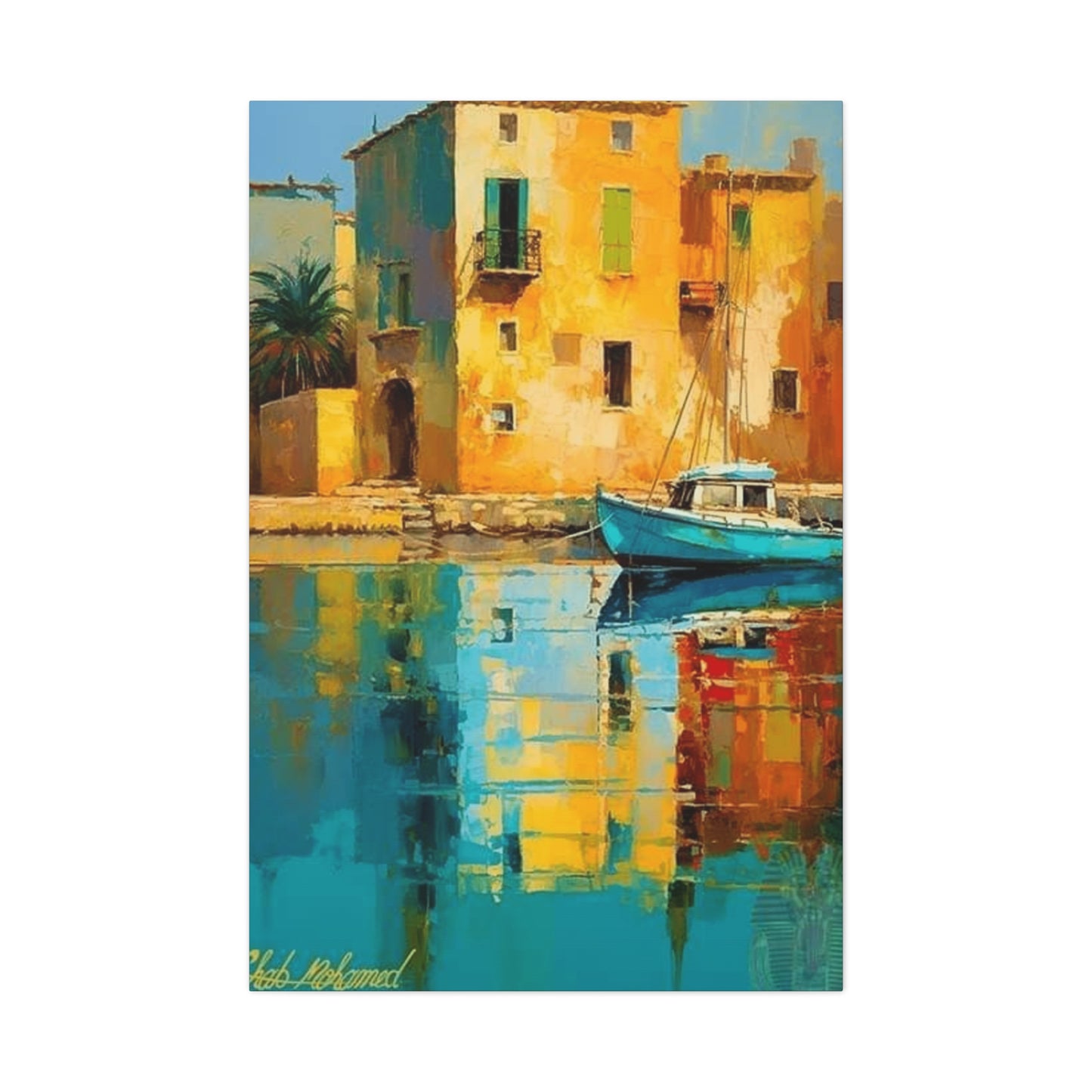
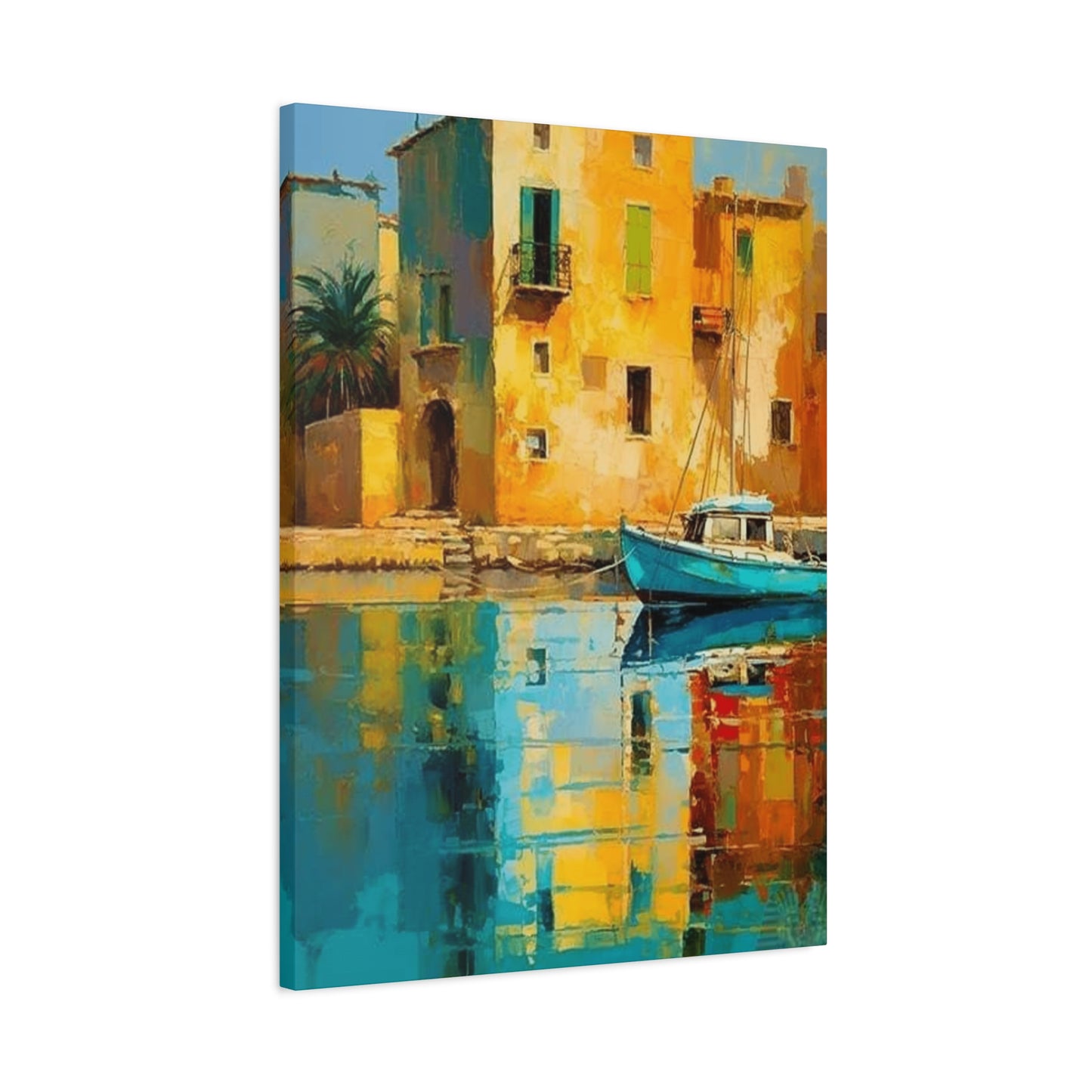
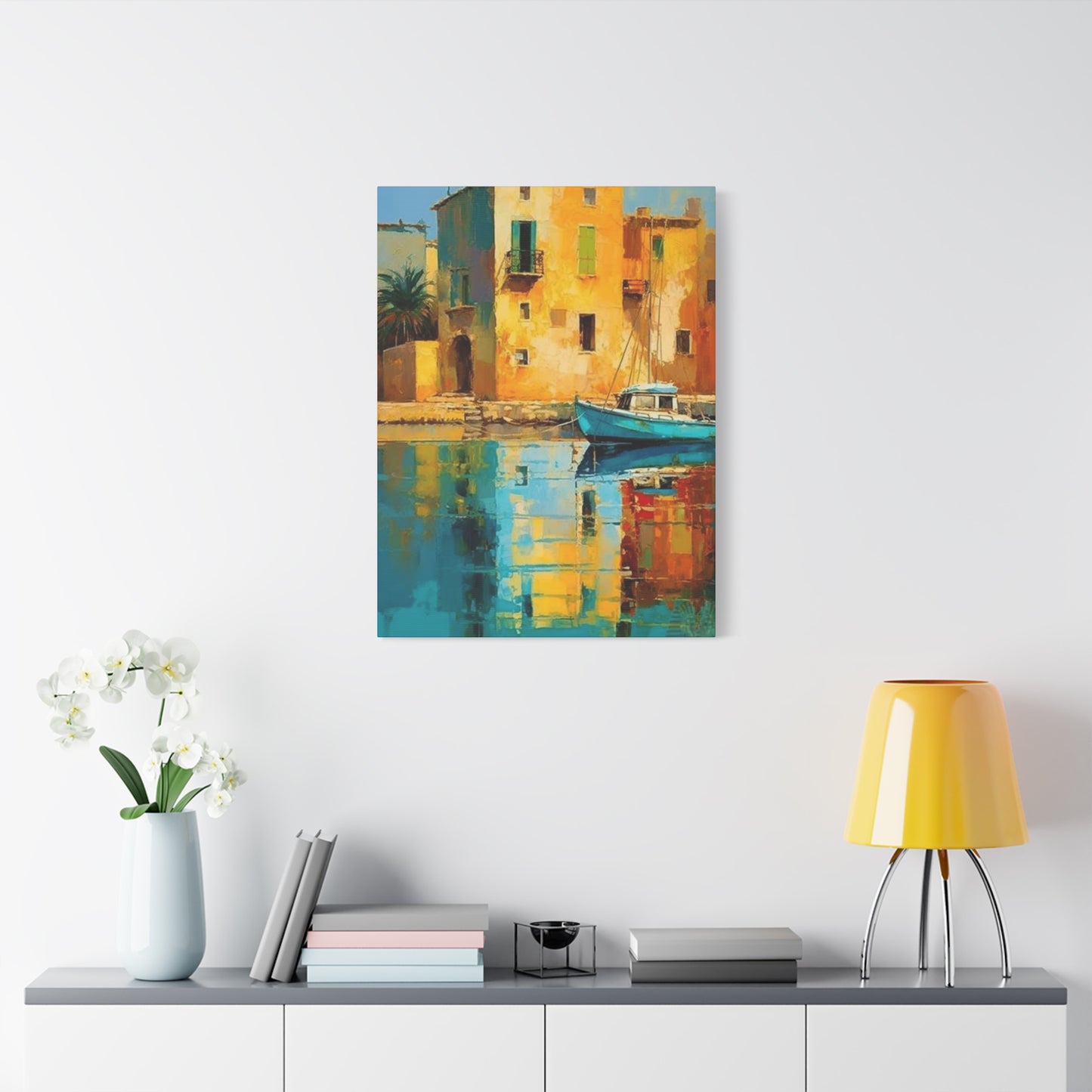

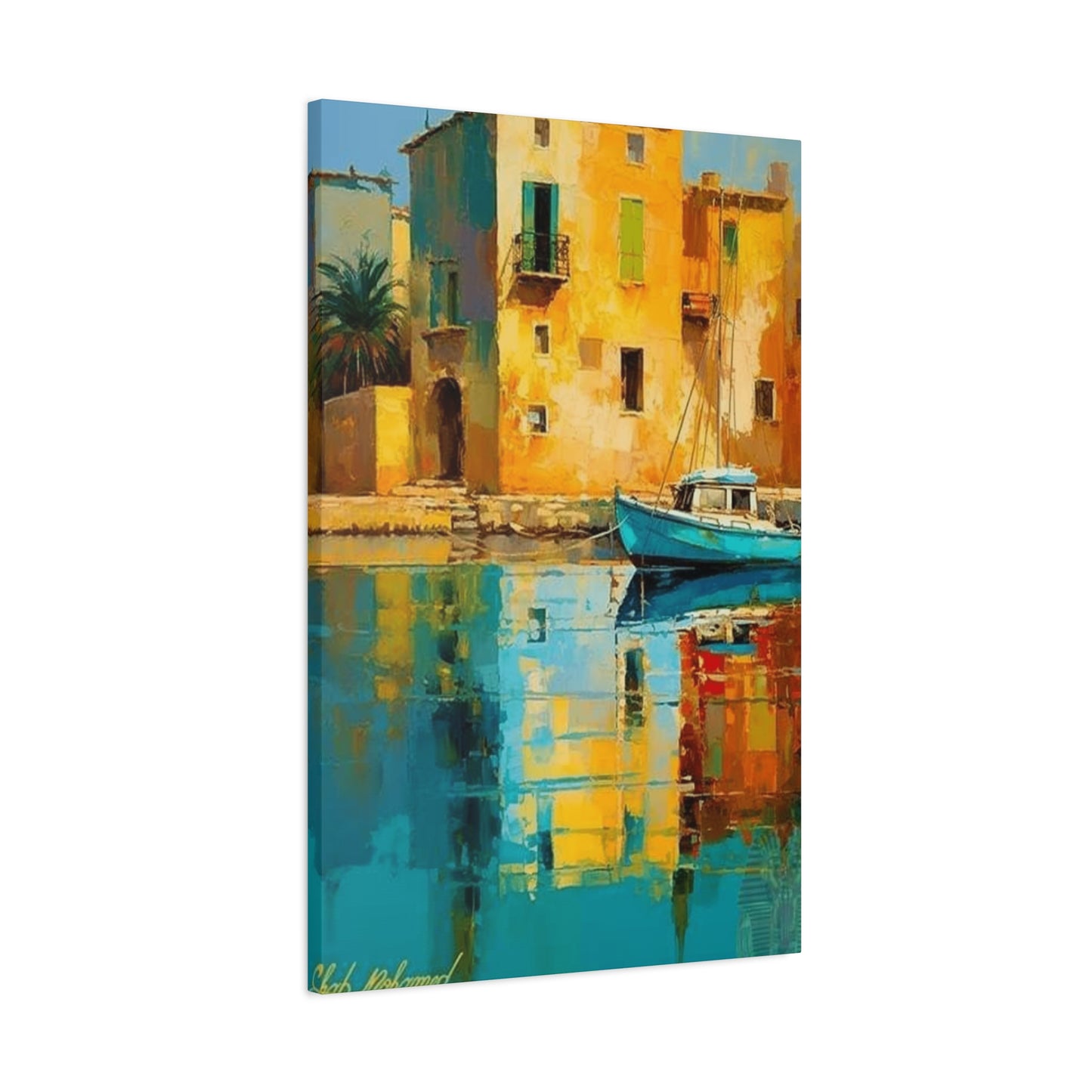
Exceptional Mohamed Wall Art Collection: Mastering Contemporary Artistic
The world of artistic expression has witnessed remarkable evolution in recent decades, with contemporary artists pushing boundaries and redefining traditional approaches to visual storytelling. Among the most captivating developments in modern artistry is the emergence of exceptional Mohamed wall art that combines cultural richness with contemporary aesthetics. This comprehensive exploration delves into the multifaceted realm of Mohamed-inspired artistic creations, offering insights into various styles, applications, and considerations for enthusiasts and collectors alike.
Renowned Mohamed Artistic Creations
The landscape of contemporary artistic expression has been significantly enriched by the emergence of renowned Mohamed artistic creations that capture the essence of cultural heritage while embracing modern aesthetic principles. These masterful works represent a harmonious blend of traditional influences and contemporary artistic techniques, creating pieces that resonate with diverse audiences across different cultural backgrounds.
Artists specializing in Mohamed-themed creations often draw inspiration from rich historical narratives, incorporating elements that speak to universal themes of wisdom, leadership, and spiritual depth. The artistic process involves careful consideration of color palettes, compositional elements, and symbolic representations that honor the subject matter while appealing to modern sensibilities.
Contemporary Mohamed artistic pieces showcase remarkable diversity in their execution, ranging from realistic portraiture to stylized interpretations that emphasize emotional resonance over literal representation. These works often feature sophisticated use of light and shadow, creating depth and dimension that draws viewers into contemplative engagement with the artwork.
The popularity of renowned Mohamed artistic creations has grown substantially among collectors who appreciate both the cultural significance and aesthetic beauty of these pieces. Museums and galleries worldwide have begun recognizing the artistic merit of such works, leading to increased exposure and appreciation for this distinctive genre of contemporary art.
Master artists working in this field employ various techniques, including traditional oil painting methods, mixed media approaches, and digital artistic processes to create compelling visual narratives. The resulting pieces demonstrate exceptional technical skill while maintaining profound emotional and spiritual depth that speaks to viewers on multiple levels.
Contemporary Mohamed Artistic Expressions
The evolution of contemporary Mohamed artistic expressions represents a fascinating intersection of traditional reverence and modern creative innovation. Artists working in this field have developed unique approaches that honor historical and cultural significance while embracing contemporary artistic movements and techniques.
Modern artistic interpretations of Mohamed-themed subjects often incorporate abstract elements that allow for broader interpretation and emotional connection. These pieces typically feature bold color choices, dynamic compositions, and innovative use of materials that create visually striking results while maintaining respectful representation of their subject matter.
Contemporary artists have embraced various stylistic approaches, from neo-impressionist techniques that emphasize emotional impact through color and brushwork to minimalist interpretations that focus on essential forms and symbolic elements. This diversity ensures that collectors and enthusiasts can find pieces that align with their personal aesthetic preferences and cultural sensitivities.
The incorporation of modern artistic movements such as expressionism, cubism, and abstract art has resulted in Mohamed-themed pieces that challenge traditional artistic boundaries while maintaining cultural authenticity. These works often feature experimental techniques, unconventional materials, and innovative compositional approaches that reflect contemporary artistic sensibilities.
Digital art platforms have also contributed to the expansion of contemporary Mohamed artistic expressions, enabling artists to explore new creative possibilities through digital painting, graphic design, and multimedia presentations. These technological advances have democratized artistic creation while opening new avenues for artistic exploration and cultural expression.
Gallery exhibitions featuring contemporary Mohamed artistic expressions have gained considerable attention from art critics and collectors, leading to increased recognition of this distinctive artistic genre within broader contemporary art movements.
Optimal Methods for Showcasing Mohamed Artwork
The presentation of Mohamed artwork requires careful consideration of various factors that enhance both the visual impact and cultural respect inherent in these pieces. Proper display techniques can significantly influence how viewers experience and appreciate the artistic and spiritual dimensions of such works.
Lighting considerations play a crucial role in optimal artwork presentation, with natural light providing the most authentic color representation while avoiding direct sunlight that could potentially damage delicate materials. Professional gallery lighting systems offer controlled illumination that highlights key artistic elements while preserving the artwork's integrity over time.
Wall placement strategies should account for viewing height, surrounding architectural elements, and the relationship between multiple pieces when creating gallery-style arrangements. The standard eye-level height of 57-60 inches from the floor to the center of the artwork ensures comfortable viewing for most observers while maintaining professional presentation standards.
Grouping arrangements can create powerful visual narratives when multiple Mohamed-themed pieces are displayed together, allowing for thematic continuity and enhanced storytelling through artistic progression. Careful spacing between pieces prevents visual overcrowding while maintaining coherent artistic dialogue between individual works.
Color coordination between artwork and surrounding environmental elements enhances the overall aesthetic impact while ensuring that the pieces remain the focal point of attention. Neutral wall colors typically provide the most versatile backdrop, allowing the artwork's inherent beauty to command attention without competition from surrounding design elements.
Professional mounting and hanging systems ensure both security and aesthetic appeal, with museum-quality hardware providing reliable support while remaining visually unobtrusive. These systems also facilitate easy repositioning and rotation of pieces when desired.
Budget-Conscious Mohamed Artistic Pieces
The accessibility of Mohamed-themed artistic pieces has expanded significantly with the emergence of budget-conscious options that maintain artistic quality while accommodating various financial considerations. This democratization of art collecting has made it possible for enthusiasts with modest budgets to acquire meaningful pieces that enhance their personal collections.
Print reproductions of original Mohamed artwork offer an excellent entry point for collectors seeking high-quality artistic pieces at accessible prices. Modern printing technologies, including giclée processes and archival inks, ensure that reproductions maintain exceptional color accuracy and longevity while remaining significantly more affordable than original works.
Emerging artists often offer exceptional value in Mohamed-themed pieces, as their works typically command lower prices while demonstrating remarkable talent and creative vision. Supporting emerging artists also contributes to the continued development of this artistic genre while providing collectors with potentially appreciating investments.
Digital artwork platforms have revolutionized access to affordable Mohamed artistic pieces, with many artists offering downloadable files that can be professionally printed and framed according to personal preferences. This approach eliminates intermediary costs while providing collectors with immediate access to desired pieces.
Smaller format pieces, such as studies and sketches, often provide affordable alternatives to large-scale works while maintaining the essential artistic elements that make Mohamed-themed art so compelling. These intimate pieces can be particularly effective in personal collections and smaller display areas.
Art fairs, community exhibitions, and online marketplaces frequently feature budget-conscious Mohamed artistic pieces from various artists, providing opportunities to discover unique works while supporting artistic communities and cultural expression.
Mohamed Artwork for Residential Living Areas
The integration of Mohamed artwork into residential living areas requires thoughtful consideration of both aesthetic harmony and cultural sensitivity. These pieces can serve as powerful focal points that enhance the overall ambiance while reflecting personal values and artistic appreciation.
Living room applications for Mohamed artwork benefit from pieces that complement existing furniture and color schemes while commanding appropriate attention as conversation starters. Large-scale works can serve as statement pieces above sofas or fireplace mantels, while smaller works might be grouped to create gallery walls that tell cohesive visual stories.
Scale considerations are paramount when selecting Mohamed artwork for living areas, as pieces should be proportionate to both the physical dimensions of the room and the furniture arrangements. Oversized pieces in small rooms can overwhelm the visual environment, while undersized pieces in large rooms may fail to achieve desired impact.
Color coordination between Mohamed artwork and existing décor elements creates cohesive visual environments that feel intentional and professionally designed. This doesn't require exact color matching but rather the establishment of harmonious relationships between artwork tones and surrounding design elements.
Thematic consistency throughout living areas can be achieved through careful selection of Mohamed pieces that share stylistic elements or complementary approaches while avoiding repetitive or overwhelming presentations. This balance creates sophisticated environments that reflect thoughtful curation and personal taste.
Seasonal rotation of Mohamed artwork can maintain fresh visual interest throughout the year while allowing collectors to enjoy different pieces at various times. This approach also provides opportunities to experiment with different arrangements and discover new appreciations for individual works.
Personalized Mohamed Artistic Commissions
The commissioning of personalized Mohamed artistic pieces represents the pinnacle of art collecting, offering collectors the opportunity to work directly with artists to create unique works that reflect specific preferences, cultural connections, and aesthetic visions. This collaborative process results in truly one-of-a-kind pieces that cannot be replicated or found elsewhere.
Artist selection for custom commissions requires careful research into artistic styles, cultural sensitivity, and professional reputation. Reviewing portfolios, client testimonials, and previous commission examples helps ensure compatibility between artist capabilities and collector expectations while establishing confidence in the collaborative process.
Commission specifications should be clearly communicated to artists, including preferred dimensions, color palettes, stylistic approaches, and any specific cultural or personal elements that should be incorporated into the final piece. Detailed discussions during the planning phase prevent misunderstandings and ensure satisfactory outcomes.
Timeline considerations for custom Mohamed artwork typically range from several weeks to several months, depending on the complexity of the piece and the artist's current workload. Patience during this process often results in superior outcomes, as artists require adequate time to develop and execute their creative vision properly.
Pricing structures for commissioned Mohamed artwork vary significantly based on artist reputation, piece complexity, size requirements, and materials involved. Transparent discussions about pricing, payment schedules, and any potential additional costs help establish clear expectations and prevent later complications.
Documentation of the commission process, including preliminary sketches, progress photos, and artist statements, can enhance the value and significance of the final piece while providing insight into the creative process for future appreciation and potential resale considerations.
Abstract Mohamed Artistic Interpretations
Abstract interpretations of Mohamed-themed subjects represent a sophisticated artistic approach that emphasizes emotional resonance and spiritual connection over literal representation. These pieces challenge viewers to engage with the artwork on deeper, more contemplative levels while respecting cultural sensitivities through symbolic rather than direct portrayal.
Color symbolism plays a fundamental role in abstract Mohamed pieces, with artists employing specific color palettes to evoke particular emotions, spiritual states, or cultural associations. Deep blues might represent wisdom and contemplation, while golden tones could symbolize enlightenment and divine connection, creating rich layered meanings within seemingly simple compositions.
Compositional techniques in abstract Mohamed artwork often incorporate geometric patterns, flowing organic forms, and dynamic movement that suggests energy and spiritual presence without relying on recognizable imagery. These approaches allow artists to explore profound themes while maintaining respect for cultural and religious sensitivities.
Texture applications in abstract pieces add tactile dimensions that enhance viewer engagement and create visual interest through varied surface treatments. Artists might employ impasto techniques, mixed media elements, or innovative material combinations to achieve desired textural effects that complement the overall artistic vision.
Contemporary abstract movements have influenced Mohamed-themed artwork through incorporation of minimalist principles, color field techniques, and gestural expressionism. These influences result in pieces that feel both current and timeless while maintaining cultural relevance and artistic integrity.
Interpretation flexibility in abstract Mohamed artwork allows viewers to bring personal experiences and cultural understanding to their appreciation of these pieces, creating individualized connections that can evolve and deepen over time through continued contemplation and reflection.
Mohamed Portrait Canvas Creations
The creation of Mohamed portraits on canvas represents a traditional yet continuously evolving artistic practice that combines technical mastery with cultural reverence. These pieces require exceptional skill in capturing both physical likeness and spiritual essence while maintaining appropriate respect for religious and cultural sensitivities.
Canvas preparation for portrait work involves careful selection of materials that will provide appropriate texture, durability, and archival quality for long-term preservation. Premium canvas materials, properly primed surfaces, and professional-grade paints contribute significantly to both the creation process and final artwork longevity.
Artistic techniques employed in Mohamed portrait creation range from classical realism approaches that emphasize accurate representation to stylized interpretations that focus on capturing essential character and spiritual presence. Master artists often develop signature techniques that become recognizable elements of their distinctive artistic voice.
Color palette selections for portrait work require careful consideration of skin tones, lighting effects, and background elements that enhance rather than distract from the primary subject. Subtle variations in color temperature and saturation can dramatically affect the emotional impact and overall success of portrait pieces.
Compositional elements such as pose, angle, background treatment, and lighting direction all contribute to the narrative quality and emotional resonance of Mohamed portrait pieces. These decisions require both technical knowledge and intuitive understanding of visual storytelling principles.
Finishing techniques, including varnish application, edge treatment, and signature placement, complete the portrait creation process while ensuring protection and professional presentation of the finished artwork for display and collection purposes.
Maintenance and Preservation of Mohamed Artwork
The proper care and maintenance of Mohamed artwork ensures long-term preservation of both artistic and cultural value while protecting collectors' investments in these meaningful pieces. Understanding appropriate preservation techniques contributes to artwork longevity and continued appreciation for future generations.
Environmental controls play crucial roles in artwork preservation, with stable temperature and humidity levels preventing expansion, contraction, and other forms of physical damage that can occur over time. Professional conservation standards recommend maintaining temperatures between 65-70 degrees Fahrenheit with relative humidity between 45-55 percent.
Light exposure management prevents fading and other photochemical damage that can irreversibly alter artwork appearance and value. UV-filtering glazing, controlled artificial lighting, and rotation of displayed pieces help minimize cumulative light damage while maintaining optimal viewing conditions for appreciation and enjoyment.
Cleaning protocols for Mohamed artwork should follow conservation best practices, typically involving gentle dusting with soft brushes and professional consultation for any staining or damage concerns. Amateur cleaning attempts often cause more harm than benefit, making professional conservation services valuable investments for significant pieces.
Storage considerations for artwork not currently displayed require acid-free materials, climate-controlled environments, and protective packaging that prevents physical damage while allowing for periodic condition monitoring. Proper storage techniques ensure that pieces remain in excellent condition during periods of non-display.
Insurance and documentation of Mohamed artwork collections provide financial protection and establish provenance records that enhance future value and facilitate proper care decisions. Detailed photographs, condition reports, and professional appraisals contribute to comprehensive collection management strategies.
Mohamed Artwork as Thoughtful Presents
The selection of Mohamed artwork as gifts requires careful consideration of recipient preferences, cultural backgrounds, and the significance attached to such meaningful presentations. These pieces can serve as profoundly meaningful gifts that express respect, appreciation, and cultural understanding while providing lasting artistic enjoyment.
Recipient considerations should include personal aesthetic preferences, existing décor styles, available display locations, and cultural connections that might influence appreciation of Mohamed-themed artwork. Understanding these factors helps ensure that gifts will be genuinely welcomed and appropriately valued by recipients.
Occasion appropriateness varies for different types of Mohamed artwork, with some pieces being particularly suitable for religious observances, cultural celebrations, or personal milestone acknowledgments. Matching artwork characteristics to specific occasions enhances the meaningfulness and impact of such gifts.
Presentation methods for gifted Mohamed artwork can enhance the overall experience and demonstrate thoughtfulness in both selection and delivery. Professional framing, elegant packaging, and accompanying information about the artist or cultural significance add value beyond the artwork itself.
Educational components accompanying gifted Mohamed artwork can enhance recipient appreciation and understanding while providing cultural context that enriches the overall gift experience. Artist biographies, cultural explanations, or historical backgrounds contribute additional depth and meaning to artistic presentations.
Budget considerations for gifting Mohamed artwork range from affordable prints and smaller pieces to significant original works, allowing gift-givers to select appropriate pieces that match both their financial capabilities and the significance of the occasion or relationship being honored.
Sources for Acquiring Mohamed Artwork
The landscape of Mohamed artwork acquisition has expanded dramatically with the emergence of various platforms and venues that cater to different collector preferences, budgets, and levels of expertise. Understanding available sources helps collectors make informed decisions while building meaningful collections.
Traditional art galleries continue to serve as primary sources for high-quality Mohamed artwork, offering curated selections, expert guidance, and authentication services that provide confidence in acquisition decisions. Gallery relationships often provide access to emerging artists, exclusive pieces, and professional consultation services.
Online marketplaces have revolutionized art acquisition by providing global access to diverse collections, competitive pricing, and convenient purchasing processes. However, online buying requires additional diligence regarding authenticity verification, condition assessment, and seller reputation to ensure satisfactory transactions.
Art fair participation offers collectors opportunities to view multiple artists' works simultaneously while comparing styles, prices, and quality across different vendors. These events also provide chances for direct artist interaction and commission discussions that might not be available through other acquisition channels.
Auction houses occasionally feature Mohamed-themed artwork, particularly pieces by established or historically significant artists. Auction participation requires understanding of bidding processes, condition reports, and market valuations to make informed purchasing decisions.
Artist studios and direct artist relationships can provide access to the most current works, commission opportunities, and deeper understanding of artistic processes and intentions. These relationships often result in more personalized collecting experiences and potential long-term artistic partnerships.
Professional Environment Mohamed Artwork
The integration of Mohamed artwork into professional environments requires careful balance between cultural expression and workplace appropriateness while considering diverse employee and client backgrounds. These considerations ensure that artistic choices enhance rather than complicate professional atmospheres.
Corporate collection strategies for Mohamed artwork should align with organizational values, cultural demographics, and client relationships while maintaining professional aesthetics that support business objectives. Thoughtful artwork selection can demonstrate cultural awareness and inclusivity while enhancing environmental sophistication.
Office placement considerations include visibility to employees and visitors, relationship to corporate messaging, and harmony with existing décor elements. Strategic placement can create positive focal points that enhance professional environments without overwhelming business functions or creating distractions.
Scale appropriateness in professional settings typically favors medium to large pieces that command appropriate attention without dominating meeting rooms, reception areas, or individual offices. Proportional relationships between artwork and architectural elements contribute to sophisticated professional presentations.
Cultural sensitivity training for staff members can enhance appreciation and understanding of Mohamed artwork while preventing misunderstandings or inappropriate comments that might create uncomfortable workplace situations. Educational initiatives demonstrate organizational commitment to cultural inclusivity and respect.
Maintenance responsibilities in professional environments require clear protocols and designated personnel to ensure artwork remains in excellent condition while minimizing disruption to business operations. Professional conservation services may be necessary for valuable pieces or complex maintenance requirements.
Large-Scale Mohamed Artistic Pieces
Large-scale Mohamed artwork creates dramatic visual impact while making powerful statements about cultural appreciation and artistic sophistication. These substantial pieces require careful consideration of display requirements, structural support, and environmental factors that affect both presentation and preservation.
Dimensional considerations for large Mohamed pieces must account for wall capacity, viewing distances, and proportional relationships with surrounding architectural elements. Oversized works can overwhelm smaller areas while potentially being insufficient for grand architectural settings that demand commanding artistic presence.
Installation requirements for large-scale pieces often involve professional services, specialized hanging systems, and structural assessments to ensure safe and secure mounting. Weight distribution, wall construction, and accessibility for future maintenance or relocation should be evaluated during installation planning.
Visual impact strategies for large Mohamed artwork can transform entire rooms or areas through commanding presence and cultural significance. These pieces often serve as central focal points that organize surrounding design elements and create memorable environmental experiences for viewers.
Transportation and handling of large-scale pieces require professional art handling services, specialized equipment, and careful planning to prevent damage during movement. Insurance considerations become particularly important for valuable large pieces that face increased risk during handling and transport.
Storage challenges for large Mohamed artwork when not displayed require significant area dedication and proper environmental controls. Alternative display rotation strategies might be necessary when collection size exceeds available display capacity for simultaneous presentation.
Framed versus Unframed Mohamed Artwork Considerations
The decision between framed and unframed presentation of Mohamed artwork significantly impacts both aesthetic presentation and preservation considerations. Each approach offers distinct advantages and challenges that collectors should understand when making display decisions for their pieces.
Framing benefits include enhanced protection from environmental factors, professional presentation standards, and visual definition that separates artwork from surrounding wall treatments. Quality framing materials and techniques also contribute to long-term preservation while potentially increasing artwork value through proper presentation.
Frame selection considerations involve style coordination, material quality, color harmony, and proportional relationships between frame dimensions and artwork size. Traditional, contemporary, ornate, or minimalist framing approaches each create different aesthetic effects that can enhance or detract from the artwork's impact.
Conservation framing techniques employ acid-free materials, UV-protective glazing, and proper spacing between artwork and glass to prevent damage while maintaining optimal presentation. These professional approaches ensure maximum preservation while providing attractive display results.
Unframed presentation offers more direct visual connection with artwork surfaces, potentially lower costs, and flexibility in display arrangements. However, unframed pieces may be more vulnerable to environmental damage and typically appear less finished in formal presentation contexts.
Cost considerations between framed and unframed options can be significant, particularly for custom framing with conservation materials and professional installation. Budget-conscious collectors might consider simple frame options or selective framing for most valuable pieces while displaying others unframed.
Mohamed Artwork in Residential Styling
The incorporation of Mohamed artwork into comprehensive residential styling schemes requires understanding of design principles, cultural sensitivity, and aesthetic harmony that creates cohesive and meaningful living environments. These considerations ensure that artwork enhances rather than conflicts with overall design objectives.
Style coordination between Mohamed artwork and existing furniture, textiles, and architectural elements creates unified visual environments that reflect intentional design choices. Traditional, contemporary, eclectic, or minimalist styling approaches each require different considerations for successful artwork integration.
Color harmony between artwork and surrounding design elements enhances overall aesthetic success while ensuring that pieces complement rather than compete with other visual components. This doesn't require exact matching but rather the establishment of pleasing relationships between color families and tonal values.
Room function considerations influence artwork selection and placement decisions, with different pieces being more appropriate for formal entertaining areas, private family rooms, or intimate bedroom settings. Understanding these functional relationships helps optimize both aesthetic and practical aspects of residential styling.
Seasonal adaptation opportunities allow for artwork rotation that maintains fresh visual interest throughout the year while accommodating changing light conditions and lifestyle patterns. This approach maximizes collection enjoyment while preventing visual staleness in long-term display arrangements.
Personal expression through Mohamed artwork selection and display reflects individual taste, cultural connections, and artistic appreciation while contributing to distinctive residential environments that feel authentic and meaningful to inhabitants and guests alike.
Historical Mohamed Artistic Styles
The exploration of historical Mohamed artistic styles reveals rich traditions and evolving approaches that have influenced contemporary artists while maintaining cultural authenticity and reverence. Understanding these historical foundations enhances appreciation for both traditional and modern interpretations of Mohamed-themed subjects.
Classical portrait traditions established foundational techniques and cultural protocols that continue to influence contemporary Mohamed artwork creation. These time-tested approaches emphasize technical mastery, cultural sensitivity, and spiritual reverence that remain relevant for modern artists and collectors.
Regional variations in historical Mohamed artwork reflect diverse cultural influences, artistic traditions, and available materials that created distinctive regional styles. These variations contribute to the rich tapestry of Mohamed artistic expression while demonstrating cultural adaptability and local artistic innovation.
Artistic evolution over centuries shows progressive refinement of techniques, incorporation of new materials, and adaptation to changing cultural contexts while maintaining core principles of respectful representation and artistic excellence. This evolution continues to inform contemporary artistic approaches and collector preferences.
Preservation of historical techniques through master-apprentice relationships and institutional education ensures continuity of traditional approaches while allowing for contemporary interpretation and innovation. These preservation efforts contribute to the ongoing vitality of Mohamed artistic traditions.
Contemporary relevance of historical styles appears in modern artists' incorporation of traditional elements, techniques, and cultural principles into current artistic expression. This synthesis creates bridges between past and present while maintaining cultural authenticity and artistic integrity.
Mohamed Artwork Trends for 2025
The contemporary art world continues to evolve rapidly, with Mohamed artwork reflecting broader trends while maintaining distinctive cultural and artistic characteristics. Understanding current trends helps collectors make informed decisions while anticipating future developments in this dynamic artistic field.
Sustainable materials and eco-conscious artistic practices are increasingly important in contemporary Mohamed artwork creation, with artists exploring environmentally responsible options for paints, canvases, and presentation materials. These considerations reflect growing awareness of environmental impact and social responsibility in artistic practice.
Digital integration in traditional Mohamed artwork includes hybrid techniques that combine conventional painting methods with digital elements, creating innovative pieces that reflect contemporary technological influences while maintaining cultural authenticity and artistic integrity.
Minimalist approaches to Mohamed artwork emphasize essential forms, reduced color palettes, and simplified compositions that create powerful impact through restraint rather than complexity. These approaches appeal to contemporary aesthetic preferences while maintaining meaningful cultural connection.
Collaborative artistic projects involving multiple artists working on Mohamed-themed pieces reflect current trends toward community engagement and diverse perspective integration. These collaborations often result in unique pieces that combine different artistic strengths and cultural viewpoints.
Installation and experiential approaches to Mohamed artwork move beyond traditional hanging pieces to create immersive environments that engage multiple senses and encourage contemplative interaction. These innovative presentations reflect contemporary interest in experiential art that transcends conventional display limitations.
Combining Multiple Mohamed Artistic Styles
The art of combining multiple Mohamed artistic styles within single collections or display arrangements requires sophisticated understanding of visual harmony, cultural appropriateness, and aesthetic balance. Successful combinations create rich, layered environments that demonstrate curatorial expertise while maintaining coherent artistic narratives.
Style compatibility assessment involves understanding common elements, complementary characteristics, and potential conflicts between different artistic approaches. Classical realism might combine effectively with contemporary interpretations that share similar color palettes or thematic elements while avoiding jarring stylistic conflicts.
Transitional techniques for combining diverse Mohamed styles include using neutral background treatments, consistent framing approaches, or strategic spacing that allows each piece appropriate visual territory while contributing to overall cohesive presentation. These techniques prevent visual chaos while maintaining individual artwork integrity.
Thematic consistency can unify diverse stylistic approaches through shared subject matter, cultural significance, or spiritual themes that transcend specific artistic techniques. This approach allows for stylistic variety while maintaining meaningful connection between different pieces in collection displays.
Progressive arrangement strategies might organize diverse Mohamed styles chronologically, by size, or through color progression that creates visual flow between different artistic approaches. These organizational principles help viewers navigate diverse collections while appreciating individual pieces and overall curatorial vision.
Balance considerations prevent any single style from overwhelming others while ensuring that each approach receives appropriate attention and appreciation. This balance requires careful attention to scale, placement, and visual weight distribution throughout display arrangements.
DIY Mohamed Artwork Creation Projects
The creation of personal Mohamed artwork projects offers meaningful opportunities for artistic expression, cultural exploration, and personal spiritual connection while developing artistic skills and appreciation for professional artists' techniques and cultural sensitivity requirements.
Project planning considerations include skill level assessment, cultural sensitivity research, material selection, and realistic timeline establishment that ensures successful completion while maintaining appropriate respect for subject matter. Adequate preparation contributes significantly to project success and personal satisfaction.
Material selection for DIY Mohamed projects might include various paint types, canvas or paper options, drawing materials, and finishing supplies that match project ambitions and budget constraints. Quality materials often produce better results while remaining within reasonable hobby budget parameters.
Technique development through practice exercises, tutorial study, and gradual skill building helps ensure that final projects reflect personal artistic growth while maintaining respectful representation of Mohamed-themed subjects. Patient skill development produces more satisfying results than rushing into complex projects.
Cultural research and sensitivity considerations are essential components of DIY Mohamed artwork projects, ensuring that personal artistic expression maintains appropriate respect and accuracy while avoiding inadvertent cultural insensitivity or misrepresentation.
Sharing and display of completed DIY projects should consider audience appropriateness, cultural sensitivity, and personal comfort levels while celebrating artistic achievement and personal creative expression. These considerations help ensure positive reception and meaningful artistic communication.
Mohamed Artwork for Personal Sleeping Areas
The selection and display of Mohamed artwork in personal sleeping areas requires special consideration of cultural appropriateness, personal comfort levels, and the intimate nature of bedroom environments. These considerations ensure that artwork enhances rather than complicates personal retreat areas.
Privacy considerations for bedroom Mohamed artwork differ from public display areas, with personal sleeping areas allowing for more intimate artistic expressions that might not be appropriate for general household or public viewing. This privacy can enable deeper personal connection with artwork while maintaining cultural sensitivity.
Size and scale considerations for bedroom Mohamed pieces typically favor smaller, more intimate works that complement the personal nature of sleeping areas without overwhelming the restful atmosphere that bedrooms should provide. Oversized pieces might create visual tension that interferes with relaxation.
Lighting considerations in bedroom Mohamed artwork display must balance appreciation opportunities with the need for variable lighting conditions that support both daytime viewing and evening relaxation. Adjustable lighting systems can accommodate different needs throughout daily cycles.
Color harmony with bedroom décor requires careful attention to existing color schemes, textile choices, and overall aesthetic themes that create cohesive, restful environments. Artwork should enhance rather than compete with the peaceful atmosphere appropriate for personal sleeping areas.
Placement strategies for bedroom Mohamed artwork might include positioning pieces for viewing from bed, integration with dresser or seating areas, or creation of small gallery arrangements that provide contemplative focal points within intimate personal environments.
Simplistic Mohamed Artistic Approaches
Minimalist approaches to Mohamed artwork represent sophisticated artistic strategies that emphasize essential elements while eliminating unnecessary complexity. These approaches can create profound impact through restraint, subtlety, and careful attention to fundamental artistic principles.
Essential element identification in minimalist Mohamed pieces requires understanding which visual components contribute most effectively to cultural representation and emotional resonance while eliminating decorative or distracting elements that might diminish overall impact.
Color reduction strategies in minimalist approaches might employ monochromatic palettes, limited color relationships, or subtle tonal variations that create sophistication through restraint rather than complexity. These strategies require careful attention to color psychology and cultural significance.
Compositional simplification emphasizes clean lines, balanced proportions, and uncluttered arrangements that focus viewer attention on essential elements while creating calm, contemplative viewing experiences. These approaches can be particularly effective in contemporary design environments.
Negative consequence utilization in minimalist Mohamed artwork employs empty or undeveloped areas as active compositional elements that enhance rather than detract from featured subjects. This technique requires sophisticated understanding of visual balance and spatial relationships.
Contemporary relevance of minimalist approaches reflects current design trends toward simplicity, sustainability, and mindful consumption while maintaining cultural authenticity and spiritual significance. These approaches appeal to modern aesthetic sensibilities while preserving traditional cultural connections.
Mohamed Artwork with Metallic Enhancement Features
The incorporation of metallic elements in Mohamed artwork creates luxurious visual effects while adding dimensional interest and light-reflecting properties that enhance overall aesthetic impact. These enhancements require careful artistic consideration to maintain cultural appropriateness while achieving desired visual results.
Gold accent applications in Mohamed artwork can symbolize spiritual enlightenment, divine connection, and cultural richness while creating visual focal points that draw attention to significant compositional elements. Traditional gold leaf techniques provide authentic metallic effects with historical artistic precedent.
Silver element integration offers subtle metallic enhancement that can complement cool color palettes while providing sophisticated accent opportunities without overwhelming primary artistic components. Silver applications can create elegant effects that enhance rather than dominate overall artistic presentation.
Application technique variations for metallic elements include leaf application, metallic paint integration, mixed media incorporation, and surface texture enhancement that create different visual effects and tactile experiences. Each technique requires specific skills and materials for successful implementation.
Balance considerations prevent metallic elements from overwhelming primary artistic content while ensuring that enhancement features contribute meaningfully to overall aesthetic success. Appropriate restraint in metallic application maintains cultural sensitivity while achieving desired visual enhancement.
Lighting interaction with metallic elements creates dynamic visual experiences that change throughout daily light cycles, adding temporal dimension to artwork appreciation. Understanding these interactions helps optimize display conditions for maximum metallic element effectiveness.
Mohamed Artwork Sizing Guidelines
The selection of appropriate sizes for Mohamed artwork requires understanding of display areas, viewing distances, architectural relationships, and cultural significance that influence optimal dimensional choices for different environments and applications.
Measurement standards for Mohamed artwork typically follow industry conventions while accommodating cultural considerations and traditional proportions that have historical significance within Islamic artistic traditions. Understanding these standards helps ensure culturally appropriate size selections.
Proportional relationships between artwork dimensions and display walls prevent pieces from appearing too small or overwhelming in their intended environments. General guidelines suggest artwork should occupy approximately 60-75% of available wall measurement for optimal visual balance.
Viewing distance calculations help determine appropriate artwork sizes for different room configurations and intended viewing positions. Larger pieces require greater viewing distances for optimal appreciation, while smaller pieces can be effective in more intimate viewing situations.
Multiple piece arrangements require careful size coordination to create harmonious groupings that maintain individual piece integrity while contributing to cohesive overall presentations. Size progression, spacing considerations, and visual weight distribution all influence successful multiple piece displays.
Custom sizing options for commissioned Mohamed artwork allow for perfect dimensional coordination with specific display requirements while ensuring that cultural and artistic elements remain properly proportioned and aesthetically successful within custom dimensional parameters.
Exclusive Mohamed Artistic Editions
Limited edition Mohamed artwork represents exceptional collecting opportunities that combine artistic excellence with investment potential while ensuring ownership of unique pieces that cannot be widely reproduced or commonly available through standard art market channels.
Edition numbering systems for Mohamed artwork follow established art market practices while providing collectors with clear information about edition sizes, individual piece identification, and authenticity verification. Understanding these systems helps collectors make informed acquisition decisions.
Artist proof designations in limited edition Mohamed pieces provide additional exclusivity for collectors while offering artists opportunities to maintain personal copies or provide special editions for particular purposes. These designations typically carry additional value and collector appeal.
Certificate authentication for limited edition pieces provides essential documentation that verifies authenticity, edition status, and provenance information necessary for insurance, resale, and collection management purposes. Professional certification enhances both security and value.
Investment considerations for limited edition Mohamed artwork include artist reputation, edition size, cultural significance, and market demand factors that influence both current value and future appreciation potential. These considerations help collectors make strategic acquisition decisions.
Market availability for exclusive Mohamed editions often requires relationships with specific galleries, artists, or dealers who have access to limited release pieces. Understanding market dynamics helps collectors identify and acquire desired pieces before they become unavailable.
Conclusion
The world of Mohamed wall art represents a rich and evolving landscape of artistic expression that bridges cultural heritage with contemporary aesthetic innovation. Throughout this comprehensive exploration, we have examined the multifaceted dimensions of acquiring, displaying, and appreciating these meaningful artistic pieces that serve as powerful conduits for cultural understanding and personal spiritual connection.
The diversity of Mohamed artistic expressions available today reflects the dynamic nature of contemporary art markets and the growing appreciation for culturally significant artwork that transcends traditional boundaries. From budget-conscious options that make this art form accessible to emerging collectors, to exclusive limited editions that represent significant investment opportunities, the range of available pieces ensures that enthusiasts at every level can find meaningful additions to their collections.
Contemporary artists working in Mohamed-themed subjects continue to push creative boundaries while maintaining essential cultural sensitivity and spiritual reverence. Their innovative approaches, whether through abstract interpretations, minimalist expressions, or mixed media experimentations, demonstrate how traditional subjects can be reimagined for modern audiences without losing their fundamental significance and emotional resonance.
The practical considerations surrounding Mohamed artwork acquisition, display, and maintenance underscore the importance of informed collecting decisions. Understanding proper care techniques, appropriate display methods, and cultural sensitivities ensures that these pieces can be appreciated and preserved for future generations while maintaining their artistic and spiritual integrity.
Professional and residential applications of Mohamed artwork demonstrate the versatility and universal appeal of these pieces across different environmental contexts. Whether enhancing corporate settings that celebrate cultural diversity or creating meaningful focal points in personal living areas, Mohamed artwork contributes depth, sophistication, and cultural richness to any environment where it is thoughtfully integrated.
The evolution of Mohamed artistic styles and the emergence of new trends reflect broader movements within the contemporary art world while maintaining distinctive cultural characteristics that set this genre apart. As we look toward future developments in 2025 and beyond, the integration of sustainable practices, digital technologies, and collaborative approaches promises continued innovation within this established artistic tradition.
The investment potential and collectible nature of Mohamed artwork add additional dimensions to their appeal, with limited editions, commissioned pieces, and works by established artists offering both aesthetic enjoyment and financial consideration for collectors who approach their acquisitions strategically.
The personal and spiritual connections that many collectors develop with Mohamed artwork transcend purely aesthetic appreciation, creating lasting relationships with pieces that provide ongoing inspiration, cultural connection, and contemplative opportunities. These deeper connections often become the most valuable aspects of artwork ownership, surpassing even significant financial investments in terms of personal satisfaction and meaning.
Educational opportunities surrounding Mohamed artwork continue to expand through gallery exhibitions, cultural institutions, and academic programs that enhance public understanding and appreciation for this distinctive artistic genre. These educational initiatives contribute to broader cultural dialogue while supporting artists and preserving important artistic traditions.
The future of Mohamed wall art appears bright with continuing innovation, growing global appreciation, and expanding access through various acquisition channels and presentation formats. As new generations of artists and collectors engage with this tradition, we can expect continued evolution while maintaining the essential cultural authenticity and spiritual significance that makes Mohamed artwork so compelling and enduring.











